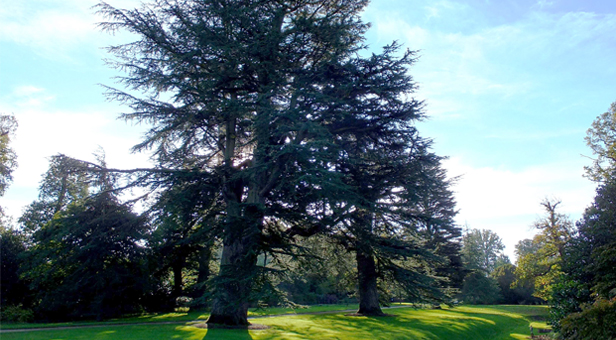According to specialists, a cedar tree planted on the Kingston Lacy Estate in 1827 by the Duke of Wellington has come to the end of its life.
The National Trust, which owns the estate, has been monitoring the condition of the tree – and two other cedars nearby – for several years.
Unfortunately, all three are suffering with rot, which has reached such an extent that the trees will now have to be felled for safety reasons.
“They are landmarks in the garden and we did all we that we could to keep them but the only effective solution for trees this badly damaged by rot is to fell them,” said Andrew Hunt, Head Gardener at Kingston Lacy.
“The tree planted by the Duke of Wellington is particularly special to us and all the visitors to Kingston Lacy. But it is also in the worst condition and, sadly, it has reached the end of its life. We were first made aware of the rot in the tree more than five years ago during the routine survey. Since then it has had remedial work, including metal bracing of limbs. We have monitored it carefully and done everything we could to keep it as part of the Kingston Lacy landscape as long as possible. Because it was planted by the Duke of Wellington, we understand its importance – indeed we draw it to the attention of our visitors because of that.”
The Duke of Wellington was a close friend of Kingston Lacy’s owner, William John Bankes, and in the same year as planting the tree, the Duke laid the foundation stone for the Philae Obelisk – one of Bankes’ greatest discoveries in Egypt, and which still stands at Kingston Lacy.
 The trees were all tested by specialists with equipment which can show areas of damage and rot inside the trunk. After the tests on the Duke’s tree showed extensive rot in most of the trunk, the advice from the experts was to fell it immediately for safety reasons. While felling the cedar, the tree surgeons found even more areas of rot in the higher branches confirming that felling was the only option.
The trees were all tested by specialists with equipment which can show areas of damage and rot inside the trunk. After the tests on the Duke’s tree showed extensive rot in most of the trunk, the advice from the experts was to fell it immediately for safety reasons. While felling the cedar, the tree surgeons found even more areas of rot in the higher branches confirming that felling was the only option.Andrew added: “We will be sorry to see them go but, in a garden, everything has a life span and sadly these trees have reached the end of their lives. We will clear the ground and hope to plant replacements for them which, although they won’t have the size and grandeur of the originals initially, we have to plant for the distant future in the way those who planted the garden 200 years ago left a legacy for us. The seeds from the Duke’s trees have been used to propagate many other younger cedars in the garden so its family line lives on with us.”








